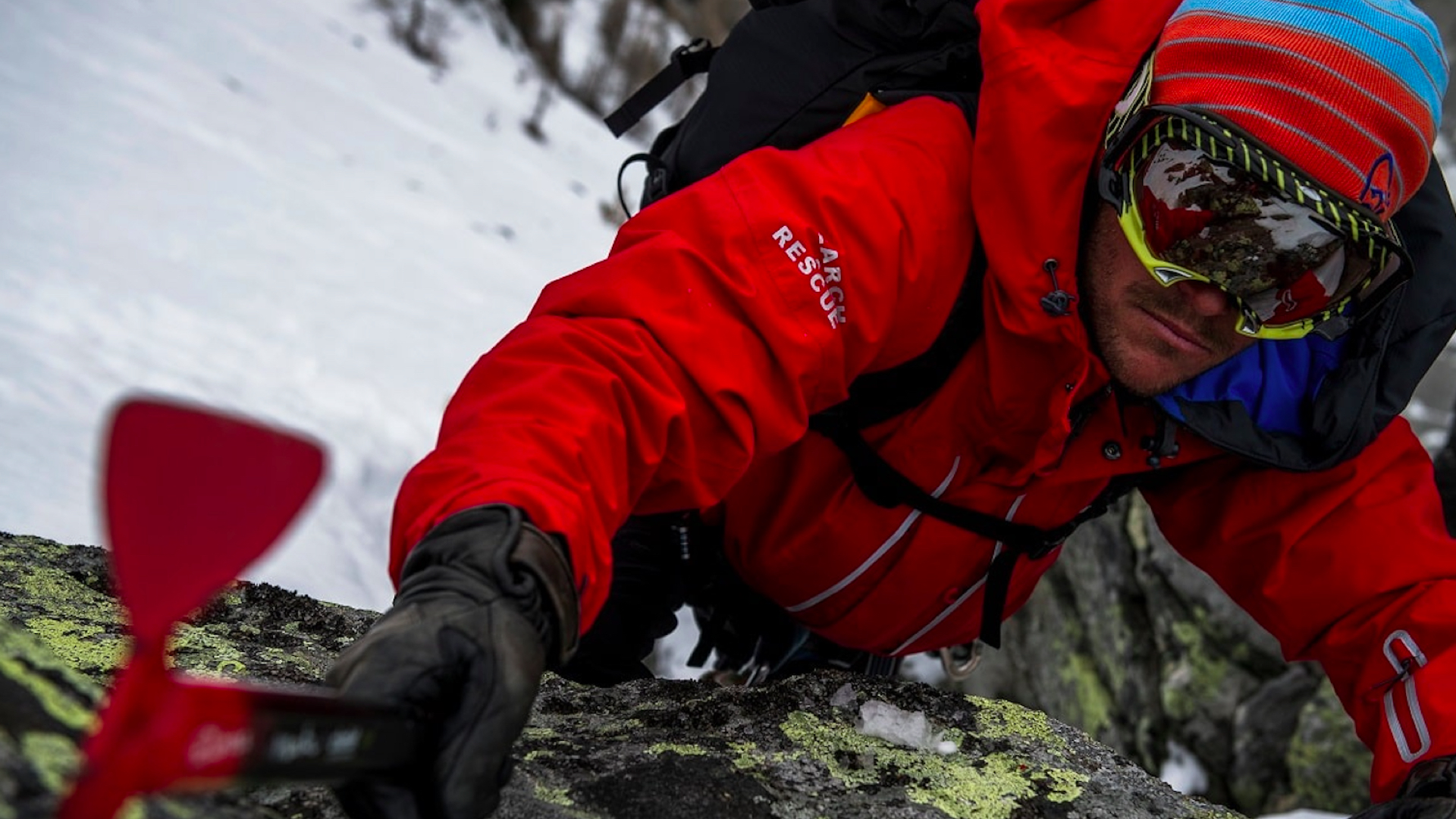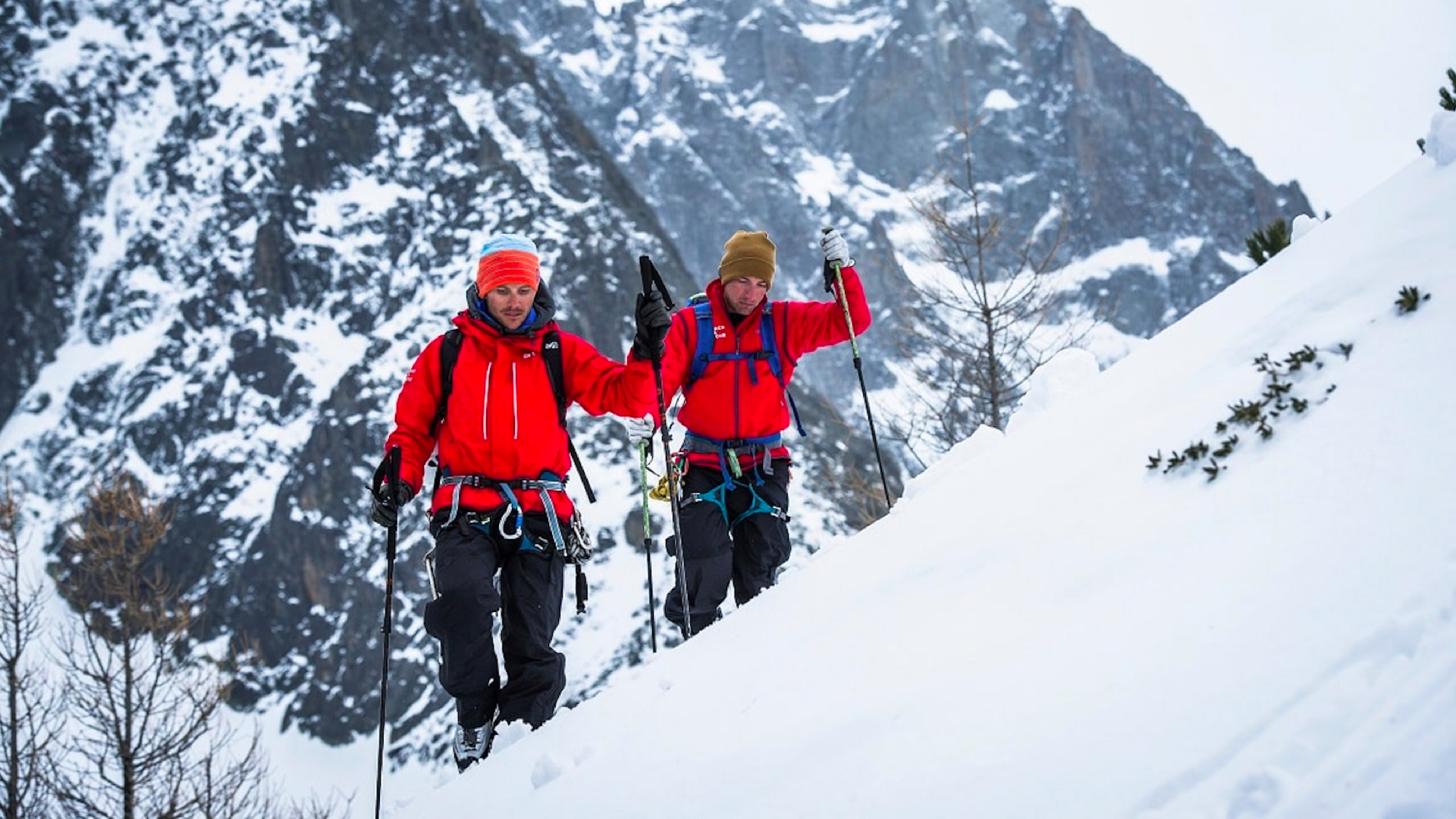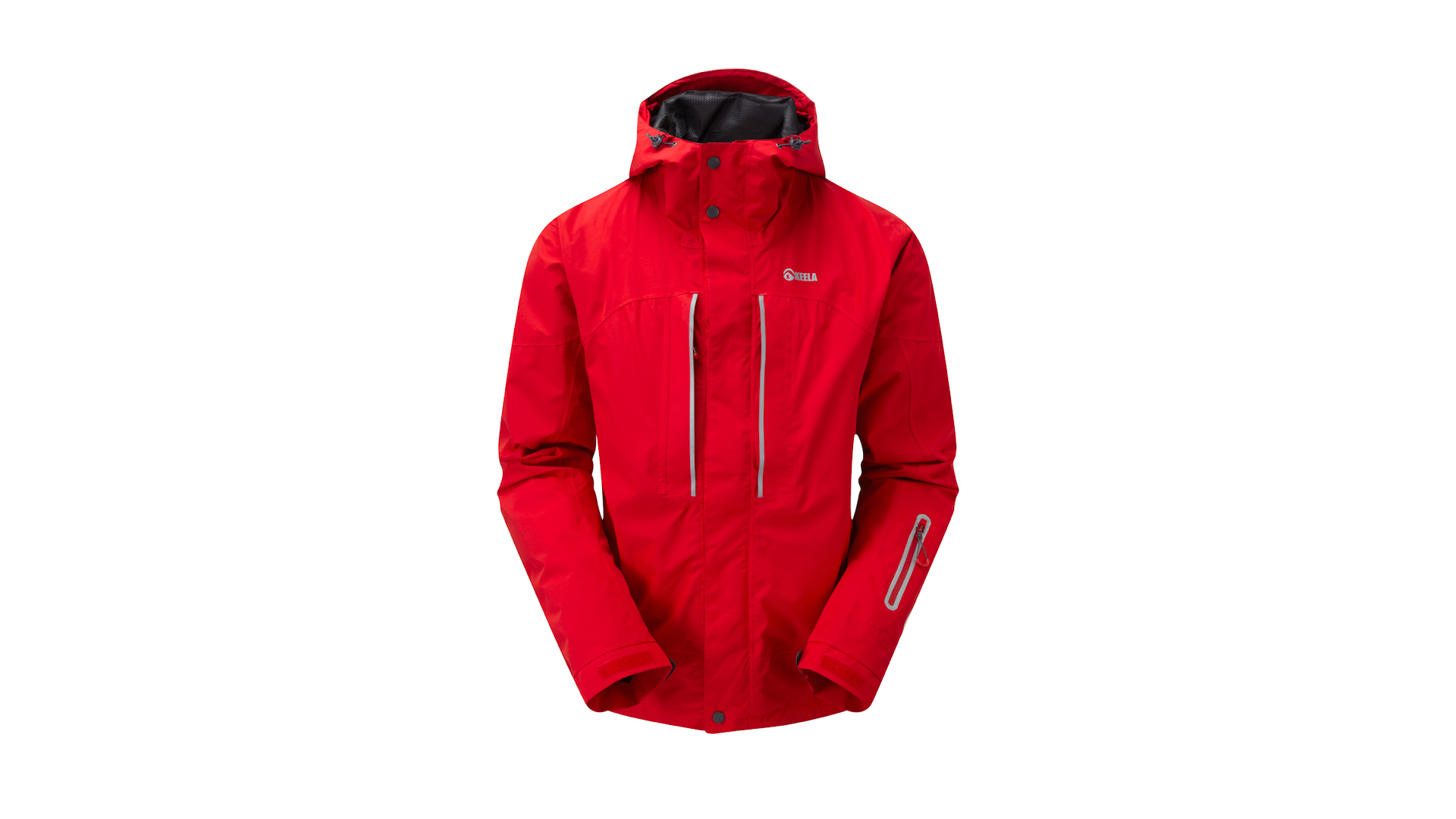Advnture Verdict
This is a real bruiser of a jacket equipped with a host of hill-ready features to fend off the worst weather. It also makes use of an unusual two-layer waterproof system that works a little differently to most conventional hard shells. Admittedly, this adds some weight, but it also offers additional insulation and improved condensation control – making this a dependable winter waterproof.
Pros
- +
Robust face fabric
- +
Protective
- +
Fully featured
- +
Plenty of practical pockets
Cons
- -
Not the lightest
- -
A little bulky
- -
Too warm for summer use
- -
No women’s specific version
You can trust Advnture
Keela Stratus: first impressions

The Keela Stratus looks and feels like a serious piece of kit. This is no gossamer-thin, ultralight and packable rain shell – it’s a big and burly waterproof jacket built to offer safe refuge from howling winds, driving rain and whirling spindrift.
This design specification comes as no surprise when you look into its heritage, as this jacket is based on its predecessor, the Cumulus Pro MRT – a bit of kit that was developed by Keela in conjunction with UK mountain rescue teams.
The Stratus builds on this pedigree with a host of professional-grade features. In practice, that means it prioritizes rugged and robust durability over low weight, while taking a belt-and-braces approach to waterproofing that ought to ensure you stay dry whatever the weather.
And the Stratus is positively laden with features. This includes a plethora of pockets: you get two chest pockets with zip closures and integral D-rings for attaching equipment lanyards, two hip pockets, an easy-access forearm pocket (ideal for stowing a compass, for example), a concealed OS map-sized security pocket and a concealed media pocket for sensitive electronic devices. Unusually, the Stratus also has a pen loop.
It also ticks all the boxes for a mountain-ready waterproof, with a fully adjustable, grown-on hood with a stiffened peak. The hood rolls away when not in use, and secures via a flap with a press-stud fastening to stop it acting either as a rain trough or a windsock. The cuffs and hem are fully adjustable and the jacket is fitted with pit zips too. These are a great way to dump heat and eliminate moisture-build-up fast, but they’re also protected with double storm flaps to ensure minimal water ingress.
The main zip has a soft chin guard and is again fitted with a double storm flap – increasingly rare these days – as well as a two-way zipper that enables the jacket to be opened from top or bottom. This makes it easier to access pockets or layers underneath the jacket.
All the zippers have chunky pulls that are easy to grab with a gloved hand. Lastly, there are 3M reflective highlights for enhanced visibility in mist, fog or encroaching darkness.
• RRP: $230 (US) / £175 (UK)
• Size: Unisex XS / S / M / L / XL / 2XL / 3XL
• Weight (men's medium): 860g / 30oz
• Colors: Rescue Red / Maritime Blue
Keela Stratus: on the trails

The Keela Stratus feels reassuringly protective, even if you’re out on exposed summits or hillsides. The fabric is completely wind- and waterproof, while also being noticeably quieter than most waterproof membrane fabrics, with none of the characteristic rustle you get from Gore-Tex, for example.
Admittedly, the outer fabric may lack some of the armor-like stiffness you get from a three-layer fabric with a high-denier nylon face, but it still feels rugged and robust. The two-layer construction also adds to an overall sensation of being safely cocooned, whilst providing more warmth than a lighter, thinner waterproof.
Keela liken their System Dual Protection (SDP) to double glazing – the outer fabric fends off the elements, while a lightweight inner layer, laminated with a hydrophilic (water-loving) membrane, sits close to your midlayer, rapidly transporting moisture away from the body to keep you dry and comfortable. Between the layers of the jacket, an “air gap” helps to build warmth, regulating core temperature and minimizing shivering when inactive. In fact, it shares some similarities with the Nikwax Analogy system used in Páramo jackets – a waterproof system that has gained a cult following.
Keela’s version works just as well, coming into its own in cold and wet conditions – basically, typical UK winter weather. The only time we found the SDP struggles is when you really start to build up a lot of heat – say, when struggling up a steep climb – though at least the pit zips help to vent the jacket quickly. The fabric is fairly breathable, and we didn’t find the inner surface building up moisture, but things can still get a bit fuggy on occasion. It’d certainly be too warm for summer use. You may find our article on breathability ratings explained useful, too.
Overall, we were impressed with the jacket’s features too, though if you prefer streamlined and minimalist kit you might find the Stratus a bit fussy and over-engineered. But there’s no denying that its multitude of pockets come in handy on the hills. Being able to batten down the hatches with that roomy, stiffened hood, fully adjustable cuffs and hem, and the double storm flaps over the main zip is also very reassuring when the rain really starts lashing you.
The fit is fairly generous – it employs Keela’s “explorer” fit, which is the brand’s roomiest cut. This allows plenty of room for layering and also offers good mobility, aided by the jacket’s articulated sleeves. On the other hand, it does add a little bulk; there are certainly trimmer-fitting winter waterproofs around. In turn, this points to the only other real downside of the Stratus, which is its fairly hefty weight. It’s a jacket to wear, not to carry – though in the cold and wet conditions for which it is designed you will of course be doing exactly that.
The price point seems extremely competitive for the solid performance and broad range of features on offer. Bottom line: it’s not the lightest or trimmest-fitting jacket around, but it is extremely protective and solidly built. You get plenty of jacket for your money here.
An outdoors writer and editor, Matt Jones has been testing kit in the field for nearly a decade. Having worked for both the Ramblers and the Scouts, he knows one or two things about walking and camping, and loves all things adventure, particularly long-distance backpacking, wild camping and climbing mountains – especially in Wales. He’s based in Snowdonia and last year thru-hiked the Cambrian Way, which runs for 298 miles from Cardiff to Conwy, with a total ascent of 73,700 feet – that’s nearly 2½ times the height of Everest. Follow Matt on Instagram and Twitter.


